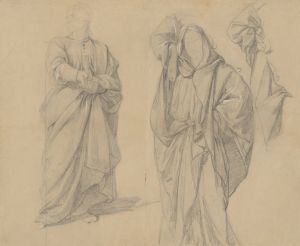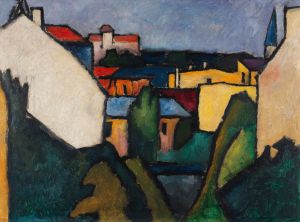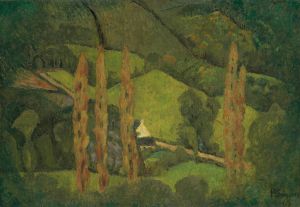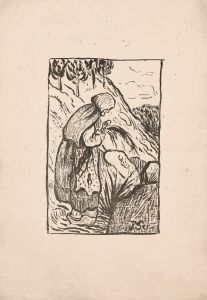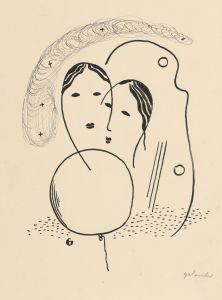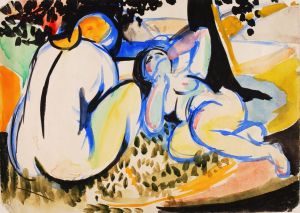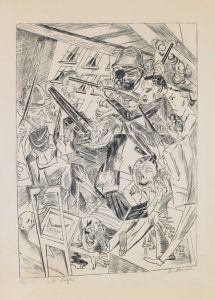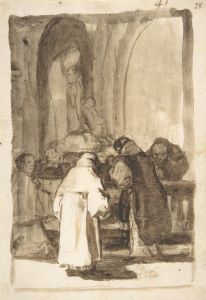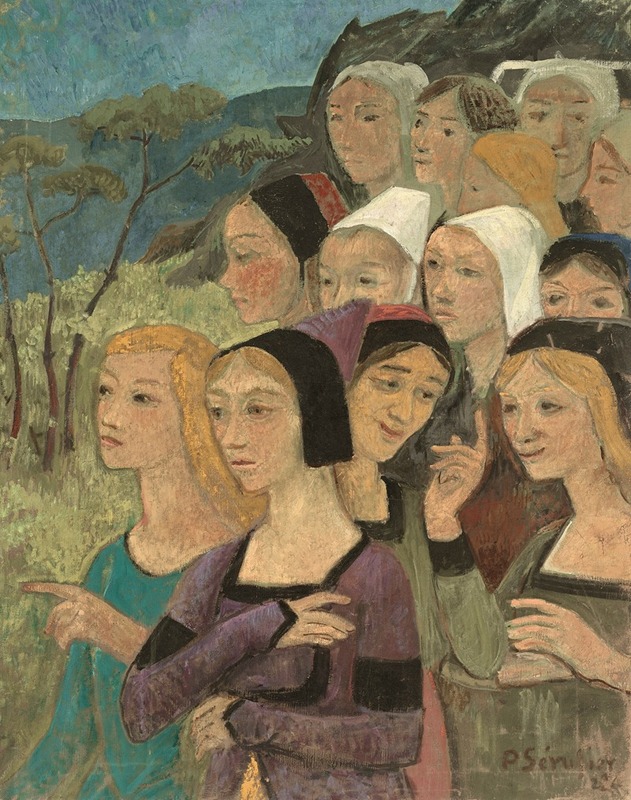
Fragment décor, têtes ou Une distribution des Pentacles
A hand-painted replica of Paul Sérusier’s masterpiece Fragment décor, têtes ou Une distribution des Pentacles, meticulously crafted by professional artists to capture the true essence of the original. Each piece is created with museum-quality canvas and rare mineral pigments, carefully painted by experienced artists with delicate brushstrokes and rich, layered colors to perfectly recreate the texture of the original artwork. Unlike machine-printed reproductions, this hand-painted version brings the painting to life, infused with the artist’s emotions and skill in every stroke. Whether for personal collection or home decoration, it instantly elevates the artistic atmosphere of any space.
Paul Sérusier's painting Fragment décor, têtes ou Une distribution des Pentacles is a work by the French Post-Impressionist and Symbolist artist, who was a key figure in the Nabis movement. Sérusier, born in 1864, was known for his innovative approach to color and composition, as well as his role in advancing Symbolist ideas in art. However, specific information about this particular painting is scarce, and its historical context, creation date, and detailed interpretation remain unclear.
The title of the work, which translates roughly to "Fragment of Décor, Heads or A Distribution of Pentacles," suggests a symbolic or mystical theme, consistent with Sérusier's interest in esoteric ideas and his exploration of spiritual and philosophical concepts through art. The mention of "pentacles" could imply a connection to occult or mystical symbolism, which was a recurring interest among some artists of the late 19th century. Sérusier often incorporated such themes into his work, reflecting the broader Symbolist movement's fascination with the unseen and the metaphysical.
As with many of Sérusier's works, this painting likely demonstrates his characteristic use of bold, flat areas of color and simplified forms, influenced by his studies with Paul Gauguin in Pont-Aven. Sérusier's time in Pont-Aven was pivotal in shaping his artistic philosophy, particularly his embrace of Gauguin's Synthetist approach, which emphasized the emotional and symbolic use of color over naturalistic representation.
The Nabis group, of which Sérusier was a founding member, sought to break away from traditional academic painting and instead focus on the decorative and symbolic potential of art. Sérusier's works often reflect these principles, blending decorative elements with deeper symbolic meanings. While the specifics of Fragment décor, têtes ou Une distribution des Pentacles remain elusive, it can be situated within this broader context of Sérusier's artistic practice and the goals of the Nabis movement.
Due to the limited availability of detailed information about this particular painting, further research or access to specialized art historical resources would be required to provide a more comprehensive analysis.





